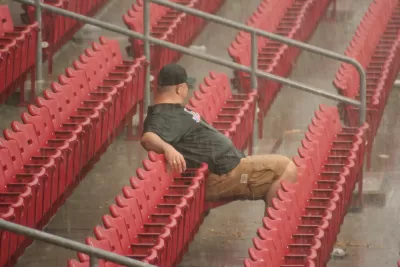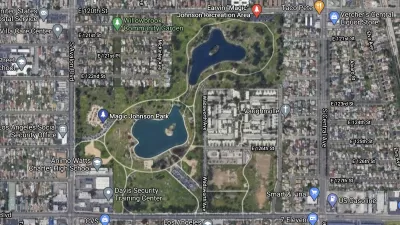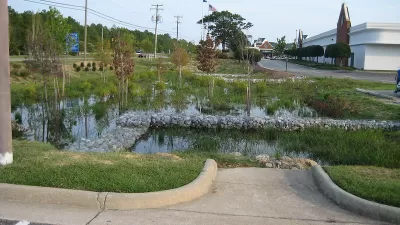The newly opened, $103 million Lick Run Greenway started as a court ordered stormwater solution. Local leaders hope it will be that and much more.

The $103 million Lick Run Greenway opened this week in Cincinnati. The park doubles as a "bio-engineered greenway," running between Queen City and Westwood avenues in South Fairmount.
According to an article by Sina Gebre-Ab and Marial Carbone, the project "began its life as a court-ordered solution to the 400 million gallons of raw sewage overflowing into Mill Creek from Cincinnati sewers each year," by diverting stormwater from sewers.
"Before this project, there was no drop of water, no drop of rain that could make its way to the creek without first getting mixed with sewage," said MSD chief operating officer Marylynn Lodor. "If you stop and think about that… every gallon that we see running through the Lick Run Greenway, that is avoided combined sewer overflows.”
Officials with the Metropolitan Sewer District attending the greenway's grand opening this week say the project has already improved conditions enough for the emergence of nine new species of fish in the creek.
South Fairmount Community Council President Jim Casey is also quoted in the article talking about the social appeal and economic development potential of the park.
“It's that community asset that finds a way to bring people together,” said South Fairmount Community Council president Jim Casey on Tuesday. “Once you have that attraction, people say, ‘Maybe there are some opportunities to build something new. Maybe there is an opportunity rehab something existing.’”
For more on the potential benefits green stormwater infrastructure, see also new research by Christopher Tirri and Mahbubur Meenar, shared by Planetizen this week.
FULL STORY: Lick Run Greenway, a $103M solution to a years-long problem, is South Fairmont 'starting again'

Americans May Be Stuck — But Why?
Americans are moving a lot less than they once did, and that is a problem. While Yoni Applebaum, in his highly-publicized article Stuck, gets the reasons badly wrong, it's still important to ask: why are we moving so much less than before?

Using Old Oil and Gas Wells for Green Energy Storage
Penn State researchers have found that repurposing abandoned oil and gas wells for geothermal-assisted compressed-air energy storage can boost efficiency, reduce environmental risks, and support clean energy and job transitions.

Placekeeping: Setting a New Precedent for City Planners
How a preservation-based approach to redevelopment and urban design can prevent displacement and honor legacy communities.

San Francisco’s Muni Ridership Grew in 2024
The system saw its highest ridership since before the Covid-19 pandemic, but faces a severe budget shortage in the coming year.

Colorado Lawmakers Move to Protect BRT Funding
In the face of potential federal funding cuts, CDOT leaders reasserted their commitment to planned bus rapid transit projects.

Safe Streets Funding in Jeopardy
The Trump administration is specifically targeting bike infrastructure and other road safety projects in its funding cuts.
Urban Design for Planners 1: Software Tools
This six-course series explores essential urban design concepts using open source software and equips planners with the tools they need to participate fully in the urban design process.
Planning for Universal Design
Learn the tools for implementing Universal Design in planning regulations.
Heyer Gruel & Associates PA
City of Moreno Valley
Institute for Housing and Urban Development Studies (IHS)
City of Grandview
Harvard GSD Executive Education
Salt Lake City
NYU Wagner Graduate School of Public Service
City of Cambridge, Maryland




























